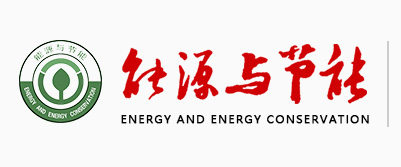202007
点火提前角对航空煤油直喷发动机燃烧及排放的影响
刘国满1,盛敬1,贝太学2,刘锐3,胡瑞1
(1. 南昌工程学院江西省精密驱动与控制重点实验室,江西 南昌 330099;2. 山东建筑大学机电工程学院,山东 济南 250101;
3. 南京工业大学机械与动力工程学院,江苏 南京 211816)
摘要: 为了分析点火提前角对二冲程点燃式航空煤油直喷发动机燃烧及排放的影响,利用GT-Power 和AVL Fire 软件
分别对该发动机整机及燃烧室建立了仿真模型,选取扭矩、功率等数据验证了模型的正确性,并对发动机在3 000 r/min、
10%负荷工况下,将喷油结束时刻设定为60°BTDC、过量空气系数为1 时的缸内平均压力、平均温度、放热率、累积放
热量、温度场分布及排放物组分质量分数等特性进行了研究。结果表明,当点火提前角由15°BTDC 增大到40°BTDC
时,二冲程点燃式航空煤油直喷发动机的扭矩、功率、缸内混合气燃烧放热量、放热率、平均压力峰值、平均温度峰值
及缸内高温区范围等,均呈现逐渐增大的趋势;CO 和Soot的质量分数逐渐减小,NO 的质量分数略有增加;扭矩和功率
最大、缸内CO 和Soot排放量最少的点火提前角是40°BTDC,功率和扭矩的最大值分别为5.29 kW 和16.97 N·m。
关键词: 点火提前角;二冲程点燃式航空煤油直喷发动机;燃烧;排放;GT-Power;AVL Fire
中图分类号: V233.7 文献标识码: A 文章编号: 2095-0802-(2020)07-0002-06
Effect of Ignition Advance Angle on the Combustion and Emissions of Aviation Kerosene Direct
Injection Engine
LIU Guoman1, SHENG Jing1, BEI Taixue2, LIU Rui3, HU Rui1
(1. Jiangxi Province Key Laboratory of Precision Drive and Control, Nanchang Institute of Technology, Nanchang 330099,
Jiangxi, China; 2. School of Mechanical and Electronic Engineering, Shandong Jianzhu University, Jinan 250101, Shandong,
China; 3. School of Mechanical and Power Engineering, Nanjing Tech University, Nanjing 211816, Jiangsu, China)
Abstract: In order to analyze the effect of ignition advance angle on the combustion and emissions of a two-stroke spark-ignition
aviation kerosene direct injection engine, simulation models of the engine and its combustion chamber were established by using
GT-Power and AVL Fire software. The correctness of simulation models were verified by the torque and power data. When the
engine rotate speed was 3 000 r/min, the load condition was 10% , the fuel injection end time was set to 60°BTDC and the excess
air coefficient was 1, the characteristics of average pressure, average temperature, heat release rate, cumulative heat release, distribution
of temperature field and mass fraction of emission components were studied. The results showed that, when ignition advance
angle was increased from 15°BTDC to 40°BTDC, the torque, power, heat release from combustion of mixture in cylinder, heat
release rate, mean pressure peak value, mean temperature peak value and high temperature range of the two-stroke spark-ignition
aviation kerosene direct injection engine were all increasing gradually; the mass fraction of CO and Soot decreased gradually,
while the mass fraction of NO increased slightly; the ignition advance angle was 40°BTDC when torque and power were maximum
and CO and Soot emissions were minimum, the maximum power and torque values were 5.29 kW and 16.97 N·m, respectively.
Key words: ignition advance angle; two-stroke spark-ignition aviation kerosene direct injection engine; combustion; emission;
GT-Power; AVL Fire


